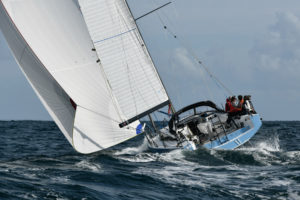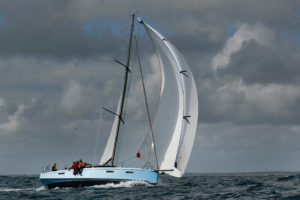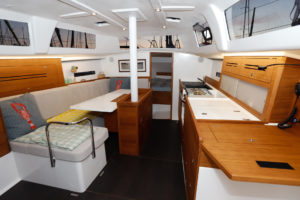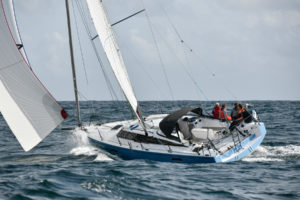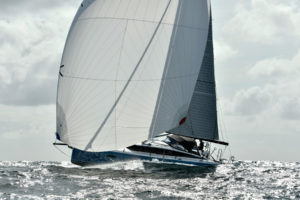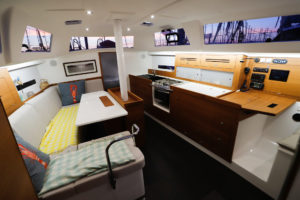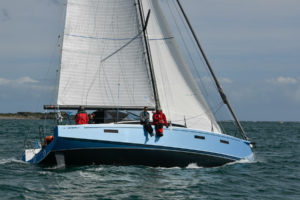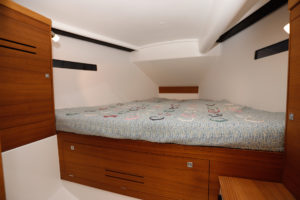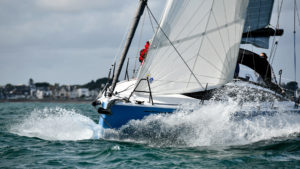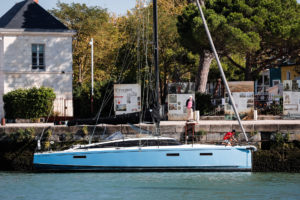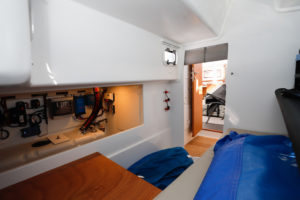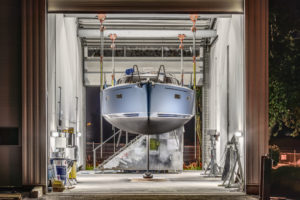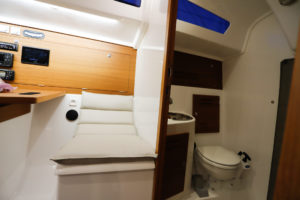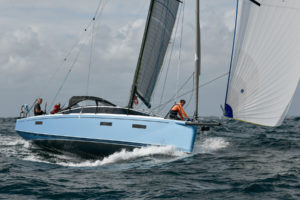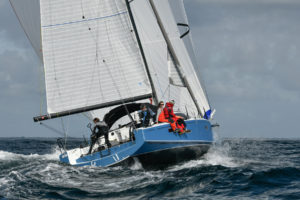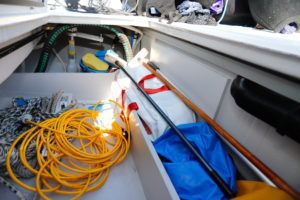JPK 39 FC
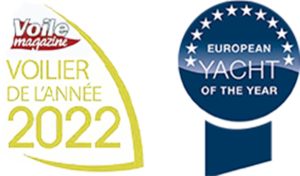
Fast Cruising
The 39 FC is a cruising yacht built by a racing yard.
It does the synthesis between light, planing racers and displacement travel boats. The result?an ultra-fast and versatile yacht in all conditions, ergonomic, safe, and comfortable with bright spaces.
Its many qualities were rewarded with the "Sailboat of the Year 2022" award and the "European Yacht of the Year 2022" award a few months after its launch.
The JPK 39 FC is a further development of its predecessor, the JPK 38 FC, which has been highly appreciated by all its owners. It has the same great qualities as its predecessor.
The power of the hull has been increased by larger bow sections, and a reversed curve of the roof modernises the look and gives more space for accommodation (possibility of a 3 cabin version).
Naval architect J. Valer
-
LOA 11,72 m
-
LWL 11,00 m
-
BOA 3,98 m
-
Displacement 5,5 t
-
Volvo engine 30 cv
-
Keel 1,9 t
-
Standard keel draft 2,15 m
-
Short keel draft 1,80 m
-
Lifting keel draft 1,30 m - 2,70 m
-
Main 44 m²
-
Genoa 38 m²
-
Asy spinnaker 138 m²
-
Staysail 27 m²
It is difficult to make a bad boat by taking as a base the JPK 38 FC which was already an excellent boat... the JPK 39 FC is really a JPK 38 FC +++. New generation hull, aggressive design, ideal ergonomics, well cared fittings ... each position, each detail takes advantage of all the experiences learnt on the 38 FC and the 45 FC to finally propose a really enjoyable boat!
Jean-Pierre Kelbert
It's hard to beat its already famous predecessor, and yet ... the redesign of the JPK 38 FC turned out to be a particularly challenging exercise! With its modern, sporty and timeless design, the JPK 39 turns heads while remaining simple and ultra-efficient. Ergonomics, looks, performance ... function and form are one.
Jean-Baptiste Dejeanty, architect
An ultra-fast and versatile cruiser
Not only is the 39 FC ultra-fast and versatile in all conditions, it also has aoptimised construction with "strong box" stress zones for total safety.
The deck and cockpit have been designed with optimum ergonomics in mind, with deckware sized to facilitate short-handed sailing.
The 39 FC has a wide and powerful hull, but with deep enough forward sections for good sea passage and a hull rocker that accepts the overload of the voyage.
The result is a stable and forgiving boat, capable of very high average speeds in all conditions.
The weight estimate is the essential factor on which the architect bases the design of the boat. The goal is to obtain a hull that is sufficiently taut to quickly exceed hull speed (overspeed) without dragging water, even under load, to remain fast in light airs, upwind, but also in heavy downwind.
Twenty years of infusion experience on our race-oriented models allows us to be very precise on this determining factor; the hull, deck and interior structural elements are built like those of a racing yacht.
Three keel options are available on the JPK 39 FC. The standard 2.15m keel is also available in a short version (1.80m) and a lifting version, which allows the draft to be reduced from 2.70m to 1.30m, so that the boat can be anchored closer to the shore.
Different techniques exist to build a lifting keel.
The simplest process, used by most manufacturers, is to cast a single appendage in epoxy-treated cast iron with a large-diameter axle that takes up all the forces.
In terms of mass, it is obvious that the keel's center of gravity is not very advantageous ... not to mention the risk of rust always present when the keels are not fully laminated! The bad locking is also a weakness, because only the axle takes up the forces and then transmits them to very concentrated areas of the structure.
On our boats, the keel fin is a vynilester infused structure made of mixed UD and QX fibres, inserted in a lead bulb (lower part of the keel), and placed in a profile mould with a resin pouring to cover this very homogeneous assembly.
The result is a keel with an extremely low centre of gravity for a reasonable overall weight (to facilitate planning).
The keel head is then placed in the well, laser shimmed before the epoxy is poured to ensure that the keel is perfectly maintained in all its positions, with a perfectly distributed transmission of forces.
Time and materials spent can be scaled from 1 to 10 between the so-called "basic" system and the method we have chosen.
Thanks to the new inverted sheerline, the interior volumes are enlarged and illuminated by the panoramic windows. The overall feel is warm and bright, with all the necessary comforts for cruising.
- Voiles & Voiliers. Premiers bords du nouveau JPK 39 FC sous voile : ça déménage
- Voile Magazine. Le JPK 39 FC couronné Voilier de l’année 2022 – Voile Magazine
- Voiles & Voiliers. Le JPK 39 FC élu European yacht of the Year : les raisons de sa victoire par la presse européenne
- Yacht TV. (Vidéo) European Yacht of the Year prizegiving ceremony
- Vela e Motore (Article). JPK 39 FC : spirito francese
Layout plan(2 versions)
Our lastest news about the JPK 39 FC
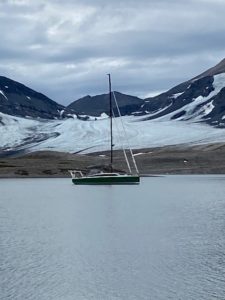

Maéva : Carnet de voyage du JPK 39 n°2 !
Merci et un grand bravo à Jean-Philippe, qui partage avec nous le récit et les photos d’un impressionnant voyage de plus de 6000 nm jusqu’au Spitzberg avec
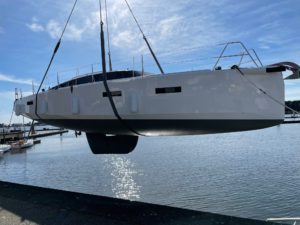

Mise à l’eau du JPK 39 FC n°4, quille relevable
C’est déjà le quatrième JPK 39 FC du chantier à toucher l’eau, et le deuxième modèle équipé d’une quille relevable. Il va être convoyé par
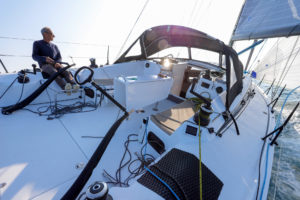

Spirito Francese : l’article de Vela e Motore sur le JPK 39 FC
Retrouvez ci-dessous l’article de Vela e Motore sur notre JPK 39 Fast Cruiser (le chargement du fichier pdf peut prendre un peu de temps).

